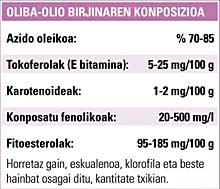Golden Olive Sweat
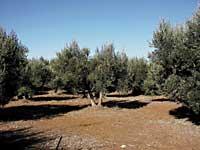
Olive oil production is much more widespread in the south of the peninsula, but in the south of Euskal Herria there are also olive and oil mills. One of them is La Almazara del Ebro, in Cintruénigo, where the works have already finished. Last fall, however, there was a major impact on oil extraction from olives.
For a start, collect olives. This work is done in various ways. For example, some place blankets or awnings under the tree, and remove the olive branches with long sticks to pour the olives. Others use machines to shake the trunk, saving time and labor, but this method is not always possible, as variations in terrain and tree quantities are decisive. The method consists of carefully collecting the olive, olive and fruit itself to cause the least possible damage.
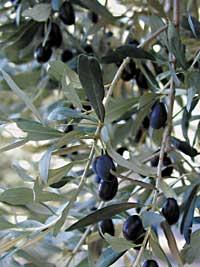
Immediately after collection, the olive is taken to the oil mill. There, through the fans, the leaves and dust accompanying the olives are removed and the samples are collected for further weighing and analysis. For the cleaning of olives, therefore, water is not used, but it is very dirty of soil.
To see how much water and oil the olives contain, the samples are analyzed in the laboratory. In this way we know the quality of the fruits and the liters of oil to be extracted for each kilo of olives, that is, the yield is calculated. Depending on the type of olives, oil and water ratios vary, for example, in the composition of pewter olives 20-25% is fat, while arbequera olives have less fat, only 17-18%.
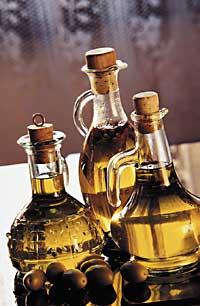
On the other hand, the olive cannot remain more than a day or two after its cleaning, since otherwise it would ferment, which would affect the quality of the oil. This is why they are put in the mill consecutively. Objective: to reduce the olive to extract all its oil.
Olive juice
Formerly a special mill with two conical stones was used to crush the olives. These stones were moved by donkeys or controls, among which the olives were reduced. This same system was used by the Romans and has been maintained to this day. However, at present there are hardly any such mills and crushing machines are used. They can be hammers, discs or grooved cylinders, with a much higher performance than the previous one.
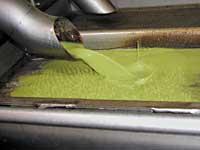
Then beat the dough obtained in the mill to facilitate oil extraction. The drops of oil come together and an oily phase is formed that is easily separable from the water of olives and olive pats. When beating the temperature is controlled so that it does not exceed 30 C. From this temperature volatile components are lost and oxidation processes are accelerated.
In the next step, the oil is separated from the pats and water. For this there are several ways. It was made by first pressure. The dough was placed on flat capazos of coconut fibres, which were stacked on top of each other and were finally subjected to pressure.

As a result, the liquid phase came out, leaving only the olive patsa between the capazos. Oil and water were then separated by decanting from the liquid phase.
Centrifuges are currently used. The dough is inserted into a horizontal cylinder and rotated at high speed. The difference between densities makes oil on the one hand and solids and water on the other. However, this oil contains some water and remains of solids that are deposited in the decanters for disposal for a couple of days. After this time the solid particles and water left in the bottom are extracted and the oil is introduced into stainless steel tanks.

These tanks do not allow air entry, and there is oil for one or two months at 22 C. Once filtered they are bottled. According to Vidal Pérez, from La Almazara del Ebro, it is a very clean and simple process. In addition, they only make virgin oil and carry the remains to Tarragona. Olive pomace oil is made there and what remains is used as biomass for energy.
Therefore, it takes advantage of everything, as they also take advantage of the leaves that at first have been accompanied by olives. In fact, sheep are used to graze and it seems that sheep eat this residue at ease, since there is always olive between leaves.
Smell, color and taste
If olives that are among the leaves for the sheep are a gift, both the juice of them for humans. Only that is olive oil, the juice of olives. In the process of making virgin olive oil no chemical or organic solvents are used, so the result is of maximum quality.
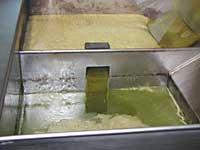
However, the quality of the oil can be altered by the origin of the olives, their maturity, their form of collection, etc. Therefore, a number of parameters are used to determine quality. One of them is the degree of acidity. The laboratory measures the amount of free fatty acid present in the oil and it is known if the olives were whole and healthy. In fact, fatty acids are released when olives are bad, for example, because they have been damaged during collection or because they have suffered a disease. Therefore, the best oil is the least acidity.
Another parameter measured in the laboratory is the peroxide index. Measures the initial degree of oxidation of the oil. As with acidity, if olives are damaged, or if oil is not produced correctly and then not well protected from heat and light, peroxides form. Consequently, the higher this index, the lower the antioxidant capacity of this oil.

In oxidation processes, in addition to peroxides, other compounds are generated. The absorbance of oil in the ultraviolet is measured for detection. As in the previous case, the lower the coefficient, the better.
However, the organoleptic characteristics of the oil, that is, the taste and smell, are decisive. The oil tasting allows to detect errors that are not detected by other methods. For this, of course, the one who tests the oil must be an expert and, as it is said that the nose of the wine tasters is golden, those who taste oils also have a fine smell and a formed taste.
Healthier oil
However, those who give fame to olive oil are not only organoleptic characteristics, but lately it has become more famous for its beneficial effect on health. As they are researched, experts have seen that the benefits of olive oil are more than expected.
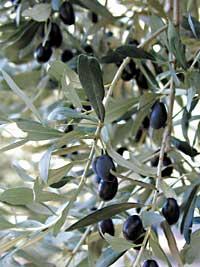
Early studies revealed that the Mediterranean diet protected from chronic diseases. Years 70. Since then, numerous studies have been carried out to determine the protective effects of olive oil, one of the pillars of this diet, and to understand the mechanisms of protection.
Many of these effects are due to oleic acid. Oleic acid is the main fatty acid that contains olive oil and is monounsaturated. Most vegetable oils contain mainly polyunsaturated fatty acids, while those of animal origin contain saturated fatty acids. It differs, therefore, from other oils. In addition, phenolic compounds and tocopherols or oil vitamin E undoubtedly have beneficial effects.
For example, in the digestive system olive oil is beneficial at various levels. Due to its easy absorption and its contribution to the formation of digestive fluids, it is better than other fats. In addition, it prevents burning and also helps in Crohn's disease and ulcerative colitis.
It also acts against free radicals for its antioxidant power. Consequently, olive oil is super good for preventing diseases produced or promoted by free radicals. These diseases include heart, blood circulation, eye, respiratory and some of the nervous system such as Parkinson's and Alzheimer's disease. It also helps the culprit of many diseases in the blood circulation, cholesterol, is at an appropriate level.
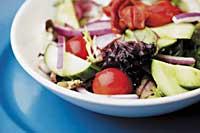
So important is the work he does in cancer prevention. It affects several stages of disease evolution. On the one hand, in the genesis of cancer intervene antioxidants and vitamin E and phenolic compounds protect the genetic material from oxidation. On the other hand, for the advancement of cancer it is essential to create a network of blood vessels, a process that is braked by the components of olive oil. Finally, free radicals return to metastasis, so olive oil also influences them. In addition, it has now been proven that oleic acid prevents the expression of a gene associated with breast cancer.
They can also use olive oil to control the disease. Researchers have shown that it is effective in reducing blood glucose levels. And olive oil has long been used to cure and prevent skin diseases. Therefore, researchers, doctors and nutrition experts agree on the convenience of taking olive oil at daily meals.
Cooked

Thanks to the collaboration of researchers and doctors, olive oil has become famous in recent times. However, a few years ago this oil was used little in the kitchens of Euskal Herria. The use of oil or other fat is also a cultural issue, and the economy also has a lot to do with it. For example, in France more fats of animal origin have been used than vegetable oils, due to their abundance and, therefore, to their low cost.
The oils most commonly used in the kitchens of the Basque Country come from oilseeds, mainly sunflower. In turn, olive oil is used more and more and more and people have already become accustomed to the taste that was formerly made strange to them.
Now it seems that some believe that it should always be used when it comes to olive oil, but, in the opinion of Dani Lasa, of the restaurant Mugaritz, this perception is not correct from the point of view of his cooks. According to Lasa, olive oil has different flavors, touches, smells and colors depending on the origin of the olive and the production process. Therefore, olive oil is selected and used in your restaurant based on these characteristics.
Moreover, the smoke point of olive oil is higher than that of sunflower, so it is more appropriate to withstand high temperatures such as frying. However, to prepare some dishes or make preserves, more neutral flavor oils may be more suitable than olive oil.
In the end, the cook decides which oil to use. But when you bet on olive oil you know that, in addition to flavoring the food, you are preparing a dish that benefits health. And that is not little.
Virgin or refined?
It is called virgin olive oil obtained without using chemicals or organic solvents in the process of squeezing olives. Sometimes, due to the low quality of the raw material or the lack of process monitoring, the oil presents defects. It is particularly appreciated in the degree of acidity, since this oil contains many free fatty acids. To make it consumable it is necessary to refine.

However, when refined, olive oil loses many of its properties. In addition to refined, clear and low-tasting oil, they are left without tocopherols, phytosterols and many other compounds with beneficial health effects.
Keep in mind that what is sold on the market with the simple name of olive oil is a mixture of virgin and refined olive oil. The oil is also extracted from olive pats, which is the worst quality. Between the two is refined olive oil, and the best are undoubtedly virgin olive oil and extra virgin. Its degree of acidity is less than one degree.
Heart Friend
Elena Fernández Jarne, a doctor from the Department of Cardiology at the University Clinic of Navarra, has investigated with her colleagues the influence of olive oil on heart disease. We met with him to talk about research and results and he explained clearly the benefits of olive oil.
How did they do the research?
It was the epidemiological study we conducted. We had two teams: one with 171 patients with heart attack and another with people of similar characteristics but without heart disease. We compared the diets of the two groups and it became clear that those in the second group took olive oil.
From this it was deduced that the ingredients contained in olive oil protect from heart disease. One of the protectors is oleic fatty acid, but the oil contains other protective components such as antioxidants and anti-inflammatory.
Did you consider the type of virgin or refined olive oil?No. At first we intended to do so, but if we started doing subgroups within the group we needed more people. On the other hand, the participants themselves did not know exactly what kind of oil they took. However, we consider that virgin olive oil is the best, since when refined some components with protective capacity are lost.
Do other vegetable oils also protect against heart problems?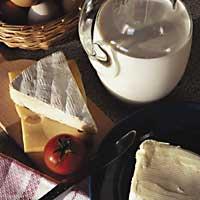
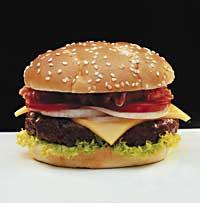
Some yes, but not as much as olive oil. If we make a classification we must put first the olive oil, second the sunflower oil enriched in oleic and third the rapeseed oil. Although rapeseed oil brings us bad memories, its fatty acid profile is beneficial for those with heart disease.
And what oils are on the other end?The most harmful are trans fats, typical of industrial buns. The fat of the fries made in the hamburgers is also not beneficial and the same happens with animal fats. You also need to be very careful about dairy products, as they contain saturated fats, even those that are declared skimmed.
In general, it is not good to take a lot of fat. However, moderation of olive oil consumption protects against heart and circulatory problems. In addition, our results have been corroborated by a group of Italian researchers who have researched much more patients than us.



